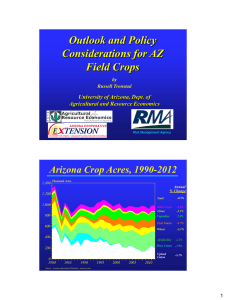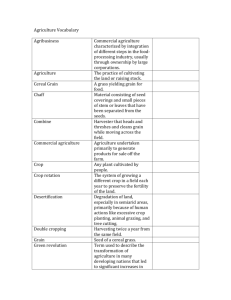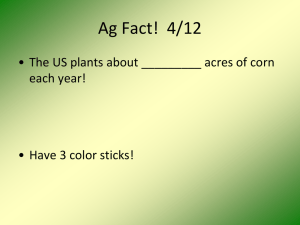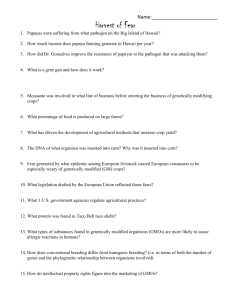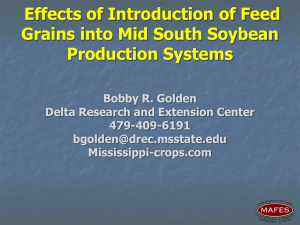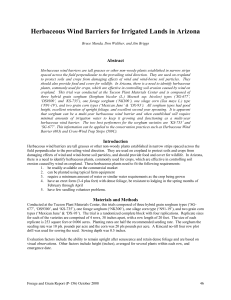msword
advertisement
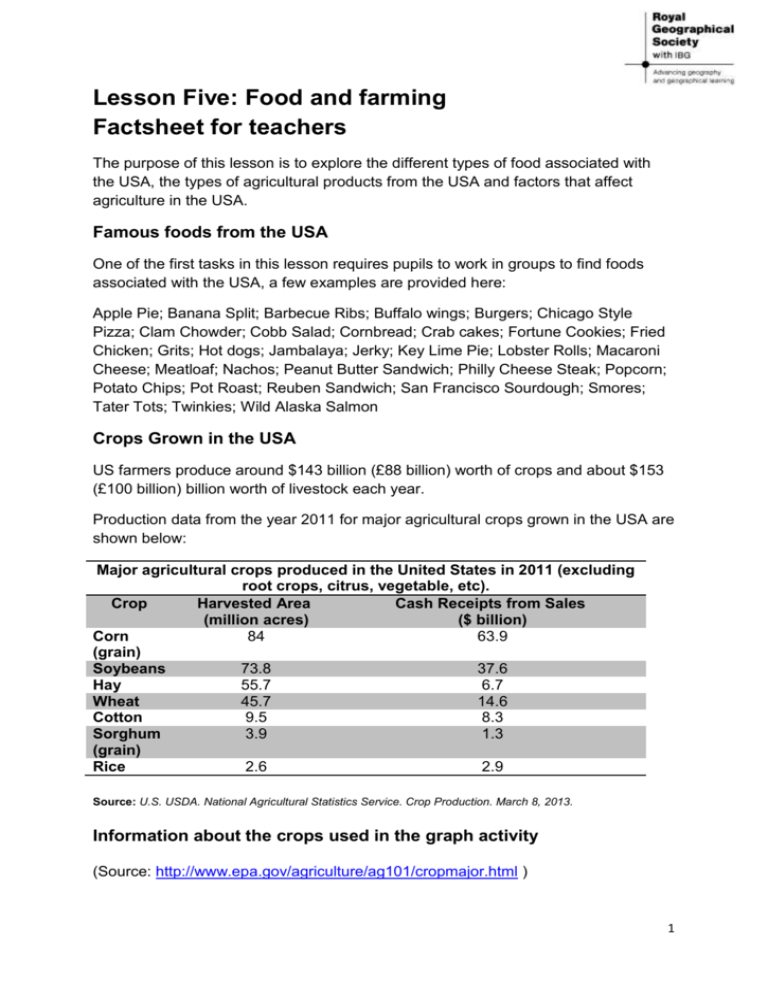
Lesson Five: Food and farming Factsheet for teachers The purpose of this lesson is to explore the different types of food associated with the USA, the types of agricultural products from the USA and factors that affect agriculture in the USA. Famous foods from the USA One of the first tasks in this lesson requires pupils to work in groups to find foods associated with the USA, a few examples are provided here: Apple Pie; Banana Split; Barbecue Ribs; Buffalo wings; Burgers; Chicago Style Pizza; Clam Chowder; Cobb Salad; Cornbread; Crab cakes; Fortune Cookies; Fried Chicken; Grits; Hot dogs; Jambalaya; Jerky; Key Lime Pie; Lobster Rolls; Macaroni Cheese; Meatloaf; Nachos; Peanut Butter Sandwich; Philly Cheese Steak; Popcorn; Potato Chips; Pot Roast; Reuben Sandwich; San Francisco Sourdough; Smores; Tater Tots; Twinkies; Wild Alaska Salmon Crops Grown in the USA US farmers produce around $143 billion (£88 billion) worth of crops and about $153 (£100 billion) billion worth of livestock each year. Production data from the year 2011 for major agricultural crops grown in the USA are shown below: Major agricultural crops produced in the United States in 2011 (excluding root crops, citrus, vegetable, etc). Crop Harvested Area Cash Receipts from Sales (million acres) ($ billion) Corn 84 63.9 (grain) Soybeans 73.8 37.6 Hay 55.7 6.7 Wheat 45.7 14.6 Cotton 9.5 8.3 Sorghum 3.9 1.3 (grain) Rice 2.6 2.9 Source: U.S. USDA. National Agricultural Statistics Service. Crop Production. March 8, 2013. Information about the crops used in the graph activity (Source: http://www.epa.gov/agriculture/ag101/cropmajor.html ) 1 Corn: The United States is, by far, the largest producer of corn in the world, producing 32 percent of the world's corn crop in the early 2010s. Corn is grown on over 400,000 U.S. farms. The U.S. exports about 20 percent of the U.S. farmer's corn production. Corn grown for grain accounts for almost one quarter of the harvested crop acres in this country. About 12% of the U.S. corn crop ends up in foods that are either consumed directly (e.g. corn chips) or indirectly (e.g. high fructose corn syrup). Corn has a wide array of industrial uses including ethanol, which can be used as a fuel In addition many household products contain corn, including paints, candles, fireworks, drywall, sandpaper, dyes, crayons, shoe polish, antibiotics, and adhesives. Soybeans: Approximately 3.06 billion bushels of soybeans were harvested from 73.6 million acres of cropland in the U.S. in 2011. Soybeans rank second, after corn, among the most-planted field crops in the U.S. Over 279,110 farms in the U.S. produce soybeans making the U.S. the largest producer and exporter of soybeans accounting for over 50% of the world's soybean production and $3-4 billion in soybean and product exports in the late 2000s. Soybeans are used to create a variety of products, the most basic of which are soybean oil, meal, and hulls. Currently, soybean oil represents approximately 65 percent of all edible oil consumed in the United States, down from about 79 percent in 2000. Soybean oil also makes its way into products ranging from anti-corrosion agents to Soy Diesel fuel to waterproof cement. Hay: Hay production in the United States exceeds 119 million tons per year. Alfalfa is the primary hay crop grown in this country. U.S. hay is produced mainly for domestic consumption although there is a growing export market. Hay can be packaged in bales or made into cubes or pellets. Wheat: Over 160,810 farms in the United States produce wheat and wheat production exceeds 2.27 billion bushels a year. The U.S. produces about 10% of the world's wheat and supplies about 25% of the world's wheat export market. 2 About two-thirds of total U.S. wheat production comes from the Great Plains (from Texas to Montana). Of the wheat consumed in the United States, over 70% is used for food products, about 22% is used for animal feed and residuals, and the remainder is used for seed. Cotton: Fewer than 18,600 farms in the United States produce cotton. Cotton is grown from coast-to-coast, but in only 17 southern states, concentrated in California, Texas, and the Southeast. Farms in those states produce over 30% of the world's cotton with annual exports of more than $7 billion. The nation's cotton farmers harvest about 15 million bales of cotton each year. Cotton is used in a number of consumer and industrial products and is also a feed and food ingredient. Most of the crop (75%) goes into clothes, 18% into home furnishings and 7% into industrial products each year. Cottonseed and cottonseed meal are used in feed for livestock, dairy cattle, and poultry. Cottonseed oil is also used for food products such as margarine and salad dressing. Grain sorghum: In the United States, 26,242 farms grow grain sorghum. Grain Sorghum is used primarily as an animal feed, but also is used in food products and as an industrial feedstock. Industrial products that utilize sorghum include wallboard and biodegradable packaging materials. This water-efficient crop is more drought tolerant and requires fewer inputs than corn. Kansas, Texas, Nebraska, Oklahoma, and Missouri produce most of the grain sorghum grown in this country. The U.S. exports almost half of the sorghum it produces and controls 70% to 80% of world sorghum exports. As much as one-third of domestic sorghum production goes to produce biofuels like ethanol and its various co-products. Rice: Just over 6,000 farms produce rice in the United States. Those farms are concentrated in four regions including the Arkansas Grand Prairie, the Mississippi Delta (parts of Arkansas, Mississippi, Missouri, and Louisiana), the Gulf Coast (Texas and Southwest Louisiana), and the Sacramento Valley of California. There are three types of rice grain; long, medium, and short, and each growing region harvests the type of rice best suited for the land. 3 U.S. rice production accounts for just under 2% of the world's total, but this country is the second leading rice exporter with 10% of the world market. About 50 - 60% of the rice consumed in the U.S. is for direct food use; another 18% goes into processed foods, 10-12 percent goes into pet food, and most of the rest (about 10 percent) goes into beer production. Explain the difference between arable and pastoral farming: Arable Farming: farming that involves plants and crops. Pastoral Farming: farming that involves animals. Mixed Farming: farming that includes a mixture of crops and animals. This website allows you to explore the US agricultural census data: http://www.agcensus.usda.gov/Publications/2012/Online_Resources/Ag_Census_W eb_Maps/ For example you can produce custom maps of different data, and explore patterns at various geographical levels. Source: USDA The Midwest is the country’s farming powerhouse. In the small farming communities of the Midwest, farmers often account for one-third of the population, especially in North Dakota, South Dakota, and Kansas. On the coasts, just one or two out of every 100 people work as farmers, even in rural areas. 4 The county with the greatest percentage of farmers is McMullen, Texas. The town’s population is 707, with 374 farmers—that’s more than half of its entire population. If you exclude children and the elderly, the proportion of farmers is even greater. No matter how urban your landscape, though, there’s probably a farmer in the range of a short drive. Should you wish to extend this exercise you can download all the relevant data from the website too: http://www.agcensus.usda.gov/Publications/2012/ The next activity in this lesson moves on to consider different factors affecting farmers in the USA. There are a range of economic, social and environmental factors that can affect farming production. The ‘Scenario cards’ pupils will use include the following factors: Growing demand for more agricultural products. Demand for agricultural products for industrial applications (e.g. energy, polymers, and pharmaceuticals). Technology used for monitoring via yield monitors and GPS, satellite an aerial photography, alongside weather monitoring and soil sensing system. New hybrid varieties of crops with greater yield potential and resistance to pests can increase crop yields. Biofuels: growing crops for biofuels Costs of inputs – seeds, fertilisers, equipment. Availability of water International competition. Impacts of climate change Lack of people with correct skills Extreme weather events e.g. hail Drought conditions. Government subsidies. [Lesson two ‘Food and Global Trade’ of RGS-IBG resource ‘Global Trade’ may be useful to support this lesson: http://www.rgs.org/OurWork/Schools/Teaching+resources/Key+Stage+12+resources/Global+trade/Food+and+global+trade.htm ] 5


